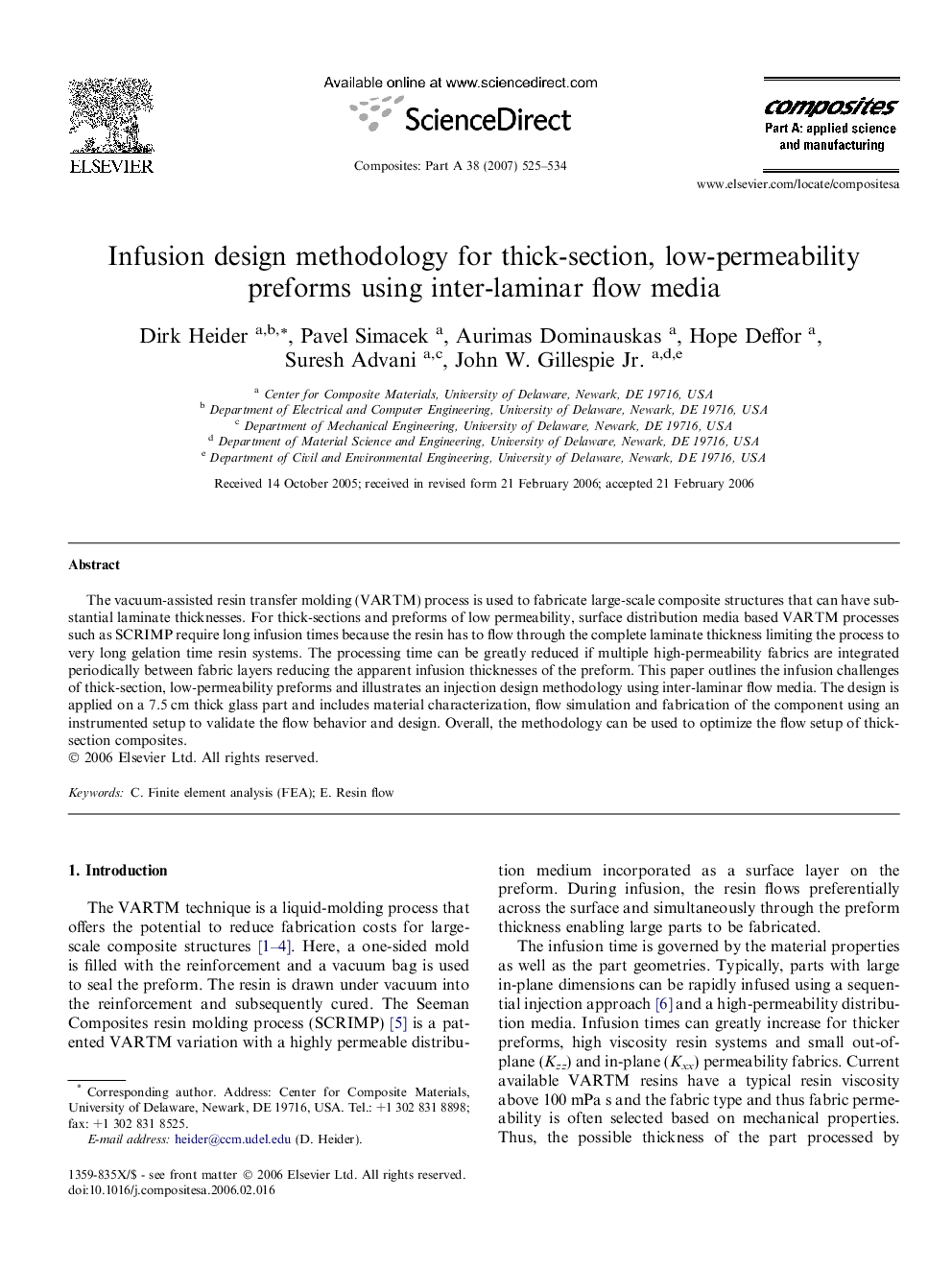| Article ID | Journal | Published Year | Pages | File Type |
|---|---|---|---|---|
| 1468161 | Composites Part A: Applied Science and Manufacturing | 2007 | 10 Pages |
The vacuum-assisted resin transfer molding (VARTM) process is used to fabricate large-scale composite structures that can have substantial laminate thicknesses. For thick-sections and preforms of low permeability, surface distribution media based VARTM processes such as SCRIMP require long infusion times because the resin has to flow through the complete laminate thickness limiting the process to very long gelation time resin systems. The processing time can be greatly reduced if multiple high-permeability fabrics are integrated periodically between fabric layers reducing the apparent infusion thicknesses of the preform. This paper outlines the infusion challenges of thick-section, low-permeability preforms and illustrates an injection design methodology using inter-laminar flow media. The design is applied on a 7.5 cm thick glass part and includes material characterization, flow simulation and fabrication of the component using an instrumented setup to validate the flow behavior and design. Overall, the methodology can be used to optimize the flow setup of thick-section composites.
